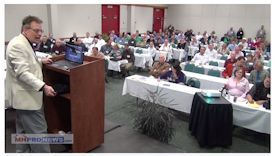The Power of Boat-Burning
Years before I saw the video of Tony Robbins and Oprah Winfrey below…
For those not familiar with YouTube Videos, we have nothing to do with the commercial
that starts this potent 90 second video.
…I’d already known the historic power of commitment, symbolized by the words, “burn the boats.”

Those who move a proverbial mountain are always the committed! They make real decisions, a true commitment. By definition, the committed give their all in the effort. By contrast, the half-hearted, toe-in-the-water measures are not how you move a mountain. For those folks who like the toe-in-the water method, sorry, but that’s the just proven by daily life. A quick example.
In professional football, the team drills, prepares and practices. They watch game film (video). They learn what each player is supposed to do, PLUS they learn what their opposition does. Then they draw up a plan to win. Then, they execute that plan. To be successful, the winners give it everything they’ve got.

Try to think of any time in any sport that wins with half-hearted efforts. You can’t. That’s just not how life works.

What we learn from athletics and team sports is a good lesson for professional life in MH is too. Toe-in-the-water gives you that same kind of result. By contrast, when Go-for-the-Gold, give it a burn the boats effort, and you’ll be pleasantly surprised how often you will succeed.
Norman the Conqueror earned that name by taking England, the first time that had been done in centuries. When he crossed the English Channel in 1066, he ordered that they burn-the-boats that brought his soldiers across the channel. That made it win or lose. Nothing in between.
Norman the Conqueror then addressed his men. He told them, in effect, ‘We are all in. We burned the boats. It is complete victory, or total defeat. Win or die.’ They won.
Fortunately in business, ‘all in’ doesn’t have to mean you risk it all! But it does mean, that once you have a sound plan, you don’t do it half-hearted. No-toe-in-the-waters. You go all out until you win. Hit a road bump? Adjust, go over, under, around or through it. You do what it takes to win.
We see that principle at work with our clients. We’ve seen that principle work with MHProNews and MHLivingNews. We saw that principle work for the Louisville Show’s post-2010 comeback.
I had someone very well connected to the Louisville MH Show tell me a few days ago how terrible the show was in 2009. He recounted how it had been running down hill for years. No surprise that in 2010, near the depth of the great recession and how it hit MH so hard, that the industry’s members bailed, and would cancel the show. Bringing it back was no small feat. It took the works of hundreds of committed pros, we at MHProNews are pleased to have played an important role in that effort.
Who says? How about the Louisville show chairman, see his words – scroll past the video to the text in blue that he shared for publication – on the webpage linked here.
Lesson? Want to win? Set a good plan. Line up the resources and talents needed to make it happen. Keep in mind that talent can be rented, it can be contracted.
Then, go all in. Victory Loves Preparation. Victory Loves Commitment. Want to win? Burn the boats. Then watch as amazing things happen.##


